Do you recognize these interesting pieces of furniture?
Shaving stool
Such a shaving stool can be said to be a witness to the ancient hairdressing industry.
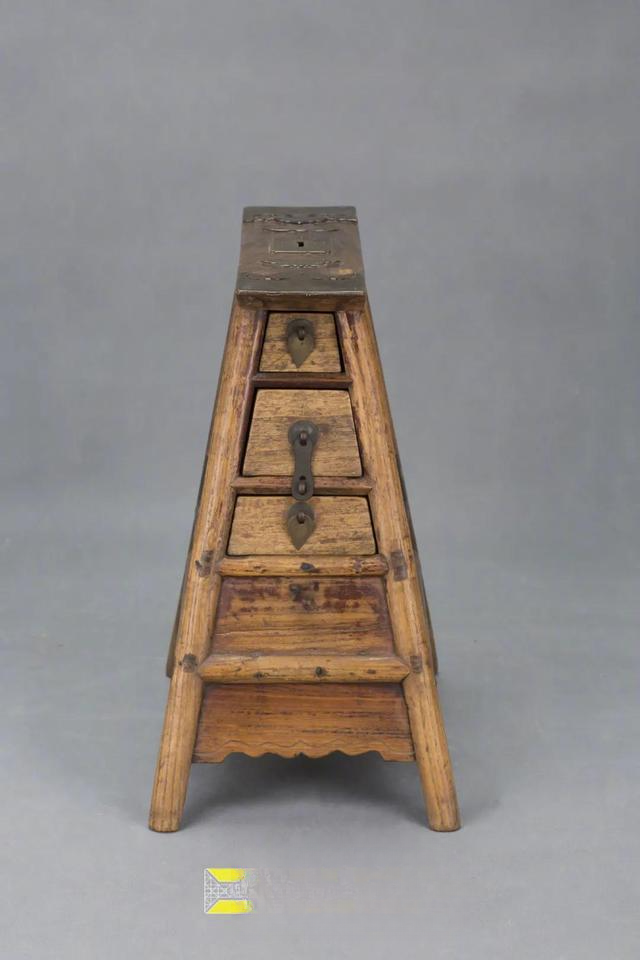
The shape of the barber's stool originated from a small stool, but there are usually three drawers between the legs: the top one is for money, which is put in through a small rectangular hole in the stool surface; the second and third drawers are used to store commonly used tools such as aprons, knives, and scissors.
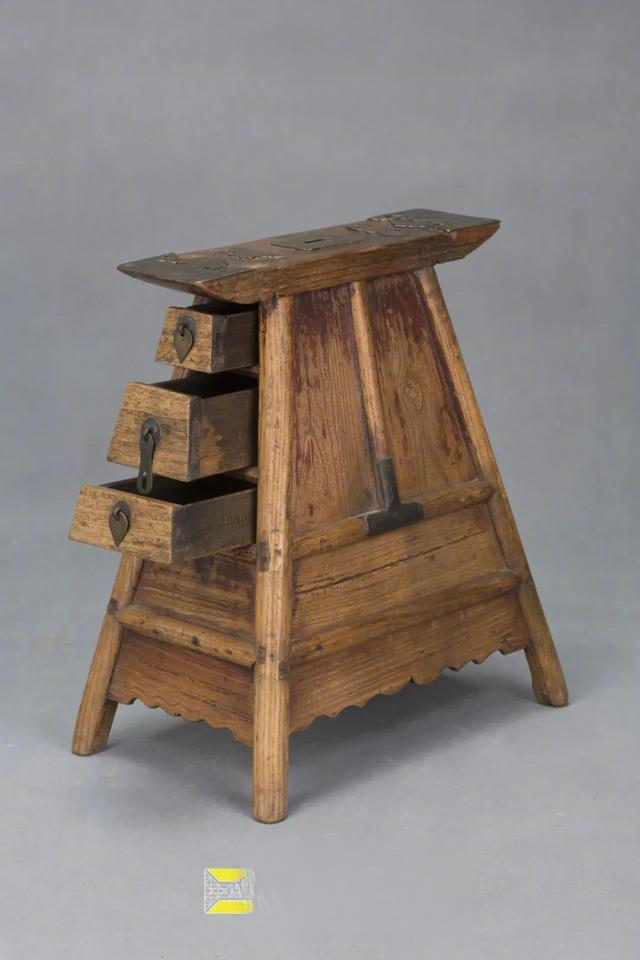
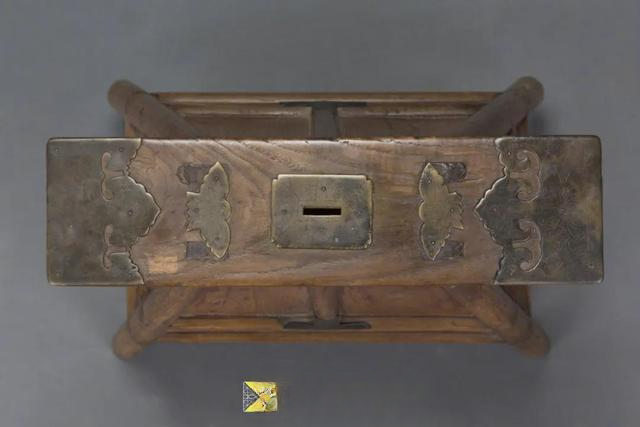
Qing cypress barber stool
In the past, the barber industry was ranked fifth among the lowest nine classes. The lowest nine classes were: first-rate witches, second-rate prostitutes, third-rate masters, fourth-rate gangs, fifth-rate barbers, sixth-rate blowers, seventh-rate actors, eighth-rate beggars, and ninth-rate candy sellers. It can be seen that the status of barbers was very low.
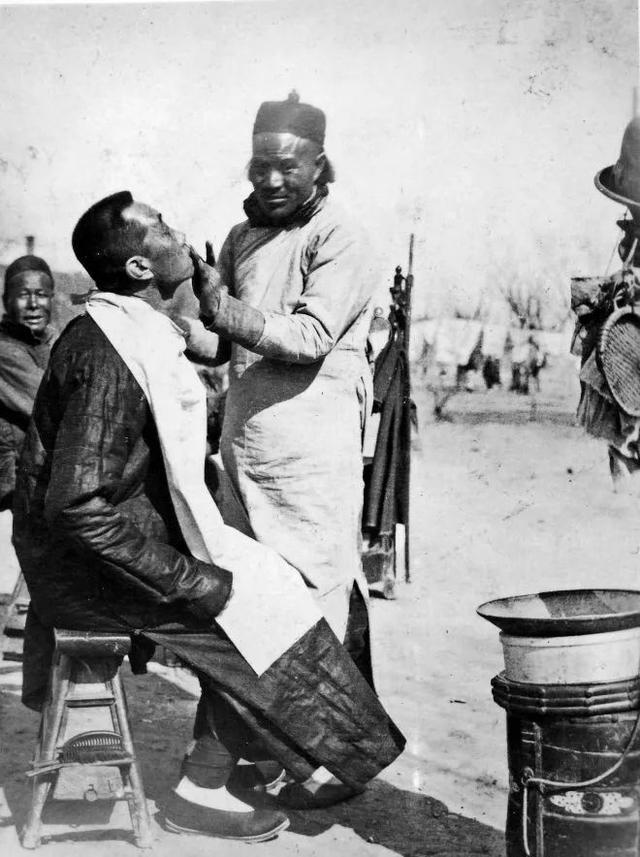
After shaving, you cannot ask the customer for money, but let the customer tip you. The amount of money depends on the customer's satisfaction and mood. The customer puts the money directly into the small rectangular hole on the barber stool. Generally, when the barber finishes a day's work and goes home, he can open the drawer on the barber stool and see the day's income.
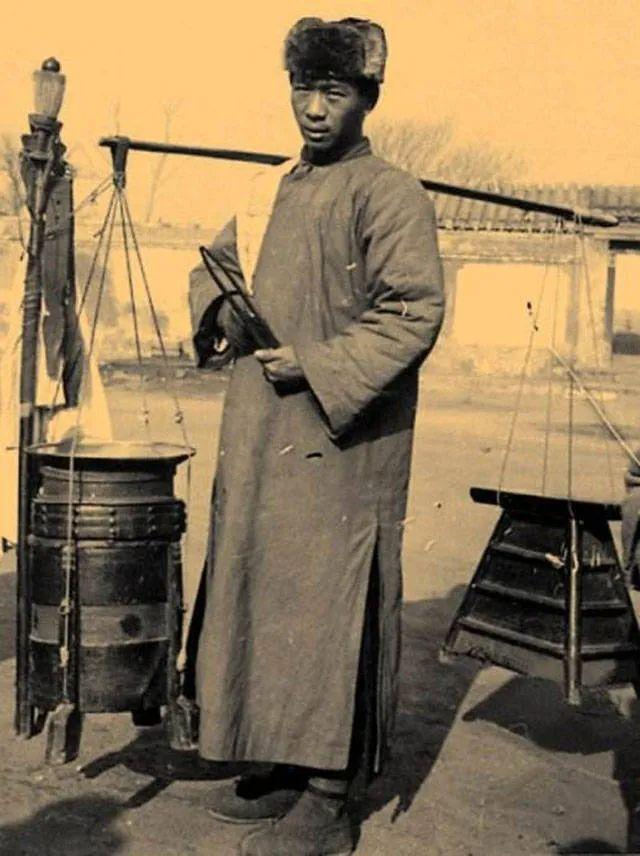
Heating and cooling chair
Ancient documents record that there is a kind of furniture that can be used for medical treatment, called "cold and warm chair". In the summer, you can put cold water or ice cubes in the cabinet door under the chair to cool down. In the winter, you can put a charcoal basin inside the door to keep warm. The lattice on the surface is used for ventilation. When using it, you must put a thin piece of porcelain plate on the surface to ensure even heat transfer. If you catch a cold or feel a chill, sitting on this chair for a while will relieve you. If you have a heat cold or heat stroke, sitting on this chair for a while can also play the same role.
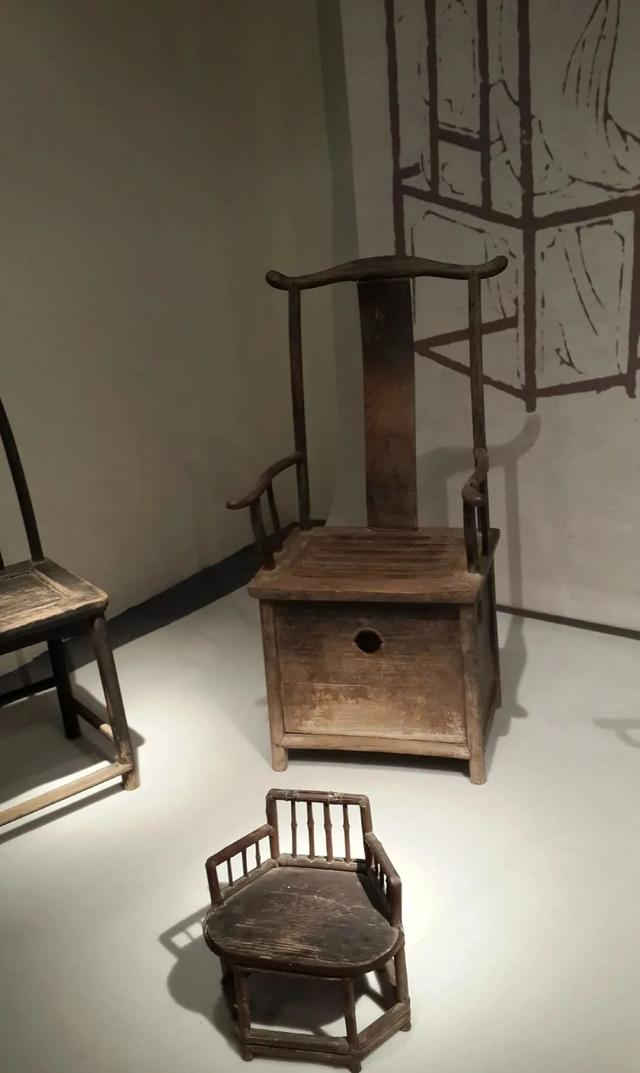
Four-headed official hat and warm chair
For a detailed introduction to this kind of furniture, we can directly quote the original text in Li Yu's Essays by Li Liweng of the Ming Dynasty:
“器之坐者有三:曰椅,曰杌,曰凳。三者之制,以时论之,今胜于古,以地论之,北不如南;维扬之木器,姑苏之竹器,可谓甲于古今,冠乎天下矣,予何能赘一词哉,但有二法未备,予特创而补之,一曰暖椅,一曰凉杌。予冬月著书,身则畏寒,砚则苦冻,欲多设盆炭,使满室俱温,非止所费不赀,且几案易于生尘,不终日而成灰烬世界。若止设大小二炉以温手足,则厚于四肢而薄于诸体,是一身而自分冬夏,并耳目心思,亦可自号孤臣孽子矣。计万全而筹尽适,此暖椅之制所由来也。制法列图于后。一物而充数物之用,所利于人者,不止御寒而已也。盛暑之月,流胶铄金,以手按之,无物不同汤火,况木能生此者乎? 凉杌亦同他杌,但杌面必空其中,确飞口方匣,四围及底,俱以油灰嵌之,上覆方瓦一片。此瓦须向窑内定烧,江西福建为最,宜兴次之,各就地之远近,约同志数人,敛出其资,倩人携带,为费亦无多也。先汲凉水贮杌内,以瓦盖之,务使下面着水,其冷如冰,热复换水,水止数瓢,为力亦无多也。其不为椅而为杌者,夏月少近一物,少受一物之暑气,面无障,取其透风;为椅则上段之料势必用木,两胁及背又有物以障之,是止顾一臀而周身皆不问矣。“
Warming stove rack
Although the ancients did not have heating and air conditioning, they used their infinite wisdom to create many rich and wonderful heating appliances, each of which was fine and exquisite. A simple heating stove is also a result of clever thinking.
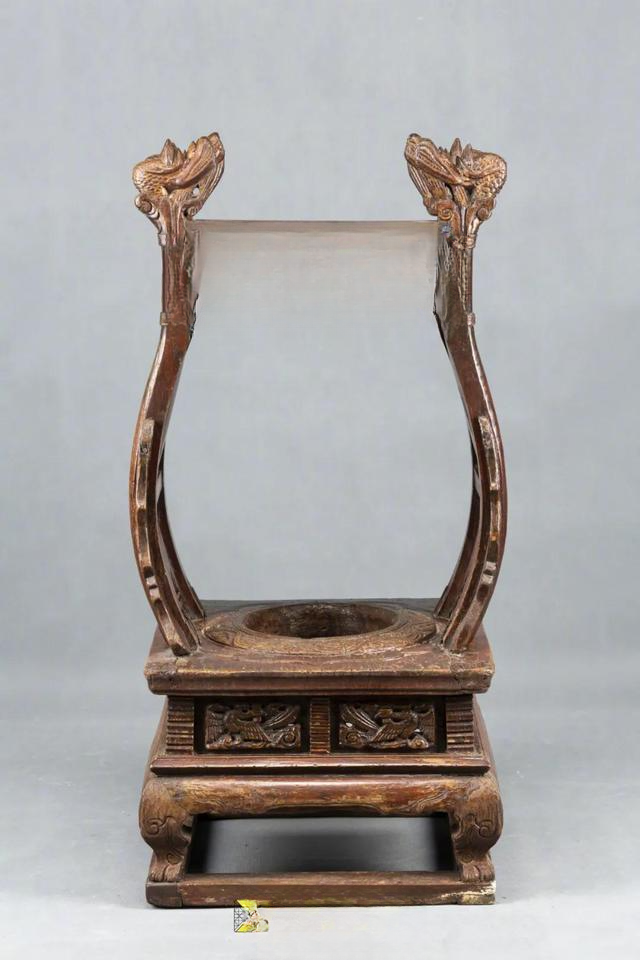
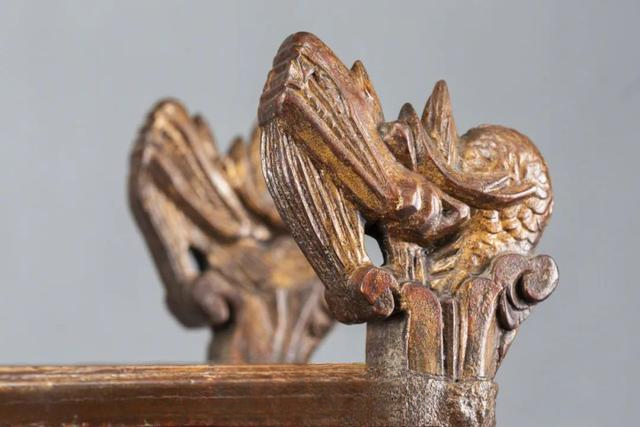
In addition to being made for appreciation, ancient Chinese furniture was often made for practical purposes. This heating stove is a typical practical piece. Made of hardwood, it is divided into two parts: the upper support and the lower base. The support is curved above the base and becomes straight towards the top. It is carved with facing dragon heads, with a belt-shaped plate in the middle and relief figures and story patterns.

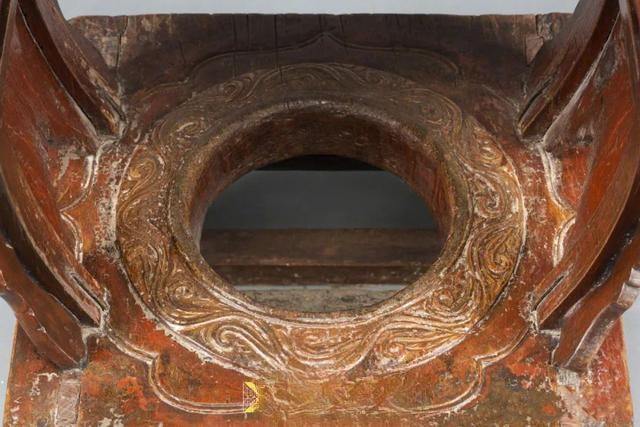
Late Qing Dynasty Wood Carved Gold Lacquer Dragon Head Warming Stove Stand
The base is square, connected to the bracket by mortise and tenon joints, with a round hole on the top for a heater; the high waist is carved with phoenixes and floral patterns; the three-bend leg design increases the sense of stability and the curve of the legs and feet; there is a mud support at the bottom. The overall design is ingenious and the workmanship is exquisite. The wood carvings are painted with gold lacquer, which not only protects the wood body, but also makes it more magnificent.
Balance Stand
Several readers have sent private messages to Yanxijun before, asking what this is called?
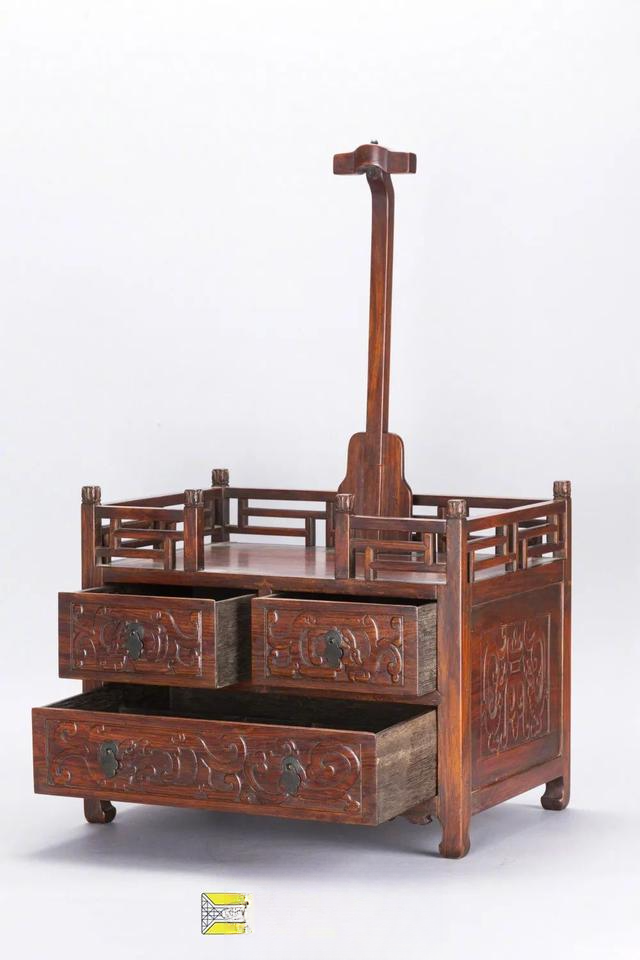
This was a commonly used weighing device in the past. In order to weigh accurately, the scale was hung on a frame, with a base and drawers at the bottom, and upright columns and crossbeams on the top.
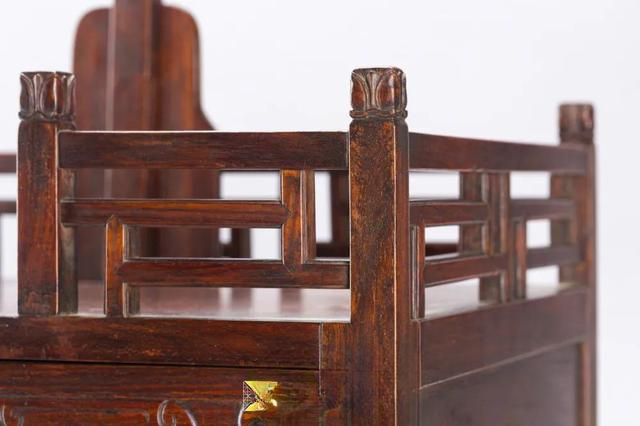
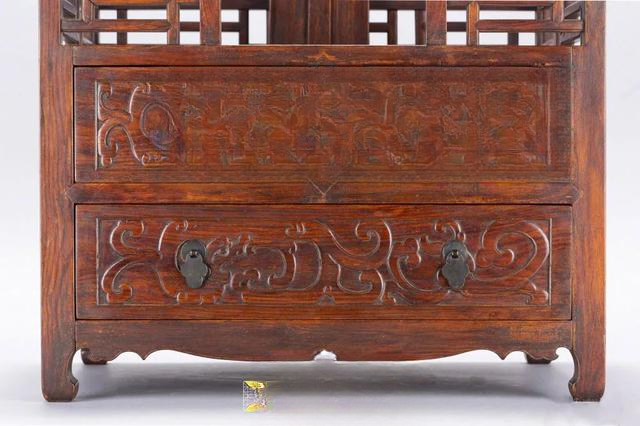
In ancient times when silver was the main currency, it was a commonly used weighing tool that cleverly applied the principle of leverage to weigh gold and silver with accuracy to the millimeter, making it an indispensable tool in doing business.
With the change of currency, the balance stand also disappeared. In addition, it was used frequently and was not like large furniture that was moved frequently. Therefore, the actual objects handed down from generation to generation are very rare and precious.
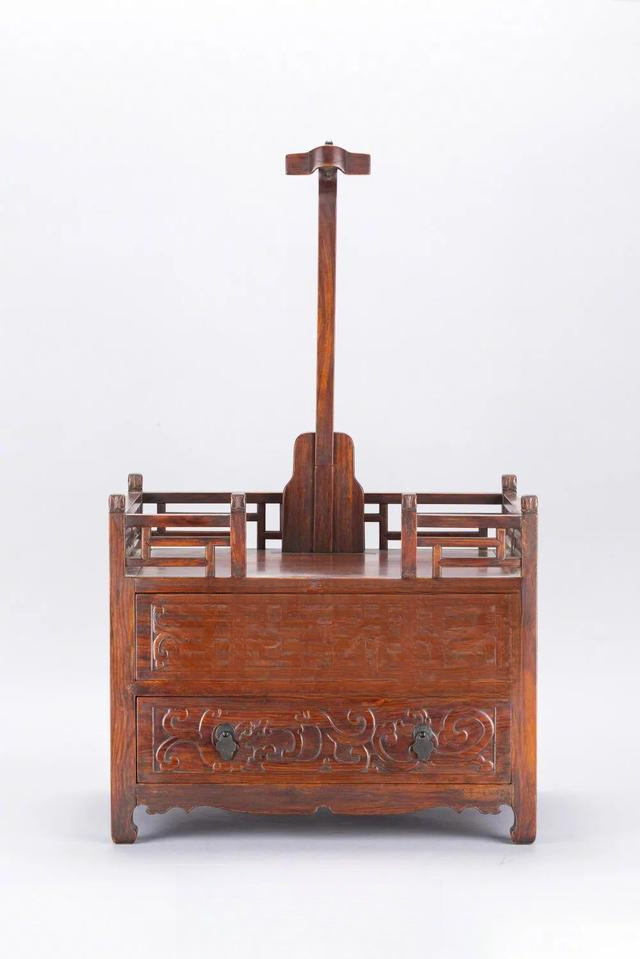
Late Ming Huanghuali Three-Drawer Fence-Type Balance Stand
sedan chair
A sedan chair is a kind of sedan chair in ancient times. There are four types of sedan chairs: ceremonial sedan chair, walking sedan chair, light walking sedan chair, and convenience sedan chair. A sedan chair has no curtains, and a sable is placed on the seat in winter and a bright yellow satin is used in summer. There are strict regulations for different occasions.

A Ming Dynasty Huanghuali wood sedan chair with a Kuilong pattern
This imperial sedan chair in the collection of the Palace Museum is 64 cm wide, 58 cm long and 107.5 cm high. From the perspective of shape, this sedan chair looks like a round chair with a base. The backrest, goose neck and armrests are all decorated with Kui pattern horns and teeth, and there are cloud pattern bright feet under the backrest.
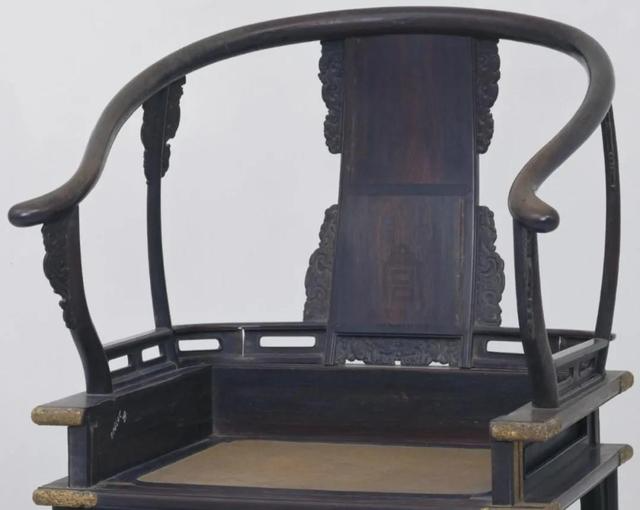
Unlike the round chair, the round chair has a waistband under the seat, while the sedan chair is on the seat, so that the lifting rod can be inserted into it. The arch between the legs under the seat is extremely narrow, which not only stabilizes the structure, but also softens the curve under the seat. The four legs of the sedan chair are incorporated into the pedestal surface. The pedestal surface is a rattan tray under the seat, and the footrest is a hard tray. The sedan chair is simple and elegant, but it is not lacking in decoration. The seat, waistband, and four sides of the pedestal are all inlaid with copper-plated corners.

This sedan chair is a means of transportation for high-ranking royal figures to move around the palace. It is also a symbol of identity and status. It is even more precious in terms of political, historical and artistic value.

As a seat symbolizing status and wealth, the sedan chair is a means of transportation for dignitaries for short distances. No matter how its shape changes, it is always closely related to indoor furniture. Although it has gradually withdrawn from our lives, it is of great historical, cultural and artistic research value.
Baby Chair
We had baby chairs in the Qing Dynasty, they were not imported from foreign countries!
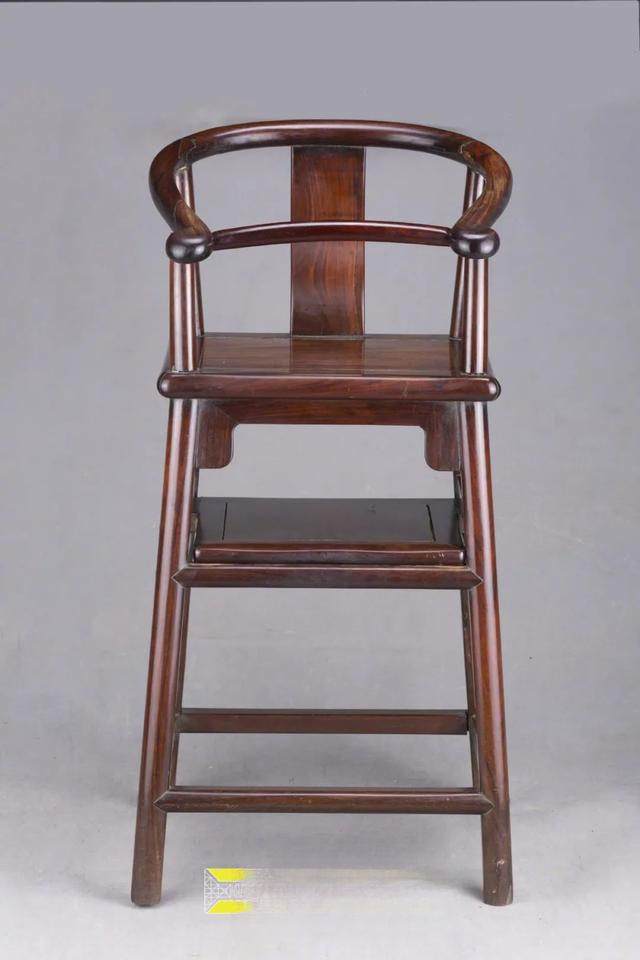
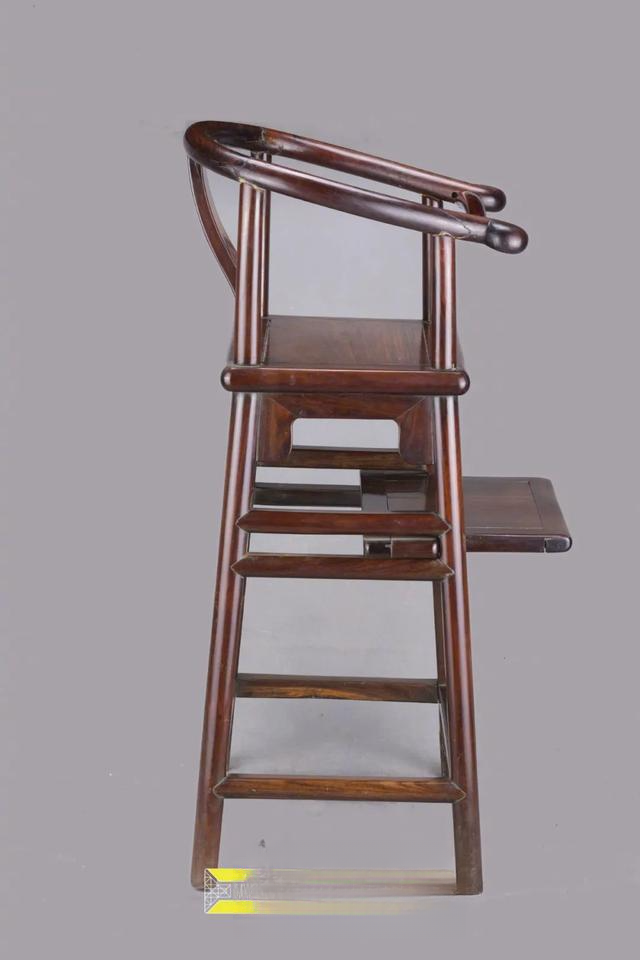
Mid-Qing Dynasty Rosewood Children's Small Round Chair
There are very few of this kind of armchair left. It was used by children in wealthy families. It is a high-end custom-made piece and is a relatively unique and rare type of furniture.
Brazier Stand
As a special type of furniture, the brazier stands that we see today are extremely rare.
First, this kind of thing must have come from a wealthy family, so the production volume is inherently small; second, the difference in life between ancient and modern times led to later people not understanding what this thing was, and the wood had been dismantled and made into other things.
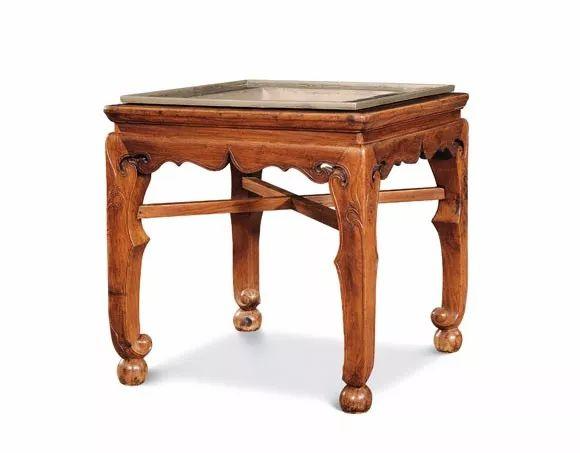

Ming Huanghuali high brazier stand with waist
For example, if the brazier stand in this example does not have the charcoal basin in the middle and is replaced with a mat, it can become a large stool.
Mr. Wang Shixiang once described a true experience in "Research on Ming-style Furniture":
In 1958, Long Shuncheng first saw a Huanghuali brazier stand at Luban Pavilion. It still had a large round hole on the surface for the brazier to sit in, and the copper nails for supporting the brazier were still there. But around 1960, when he saw it again at a hardwood furniture store in Wangfujing, it had been changed into a large stool. Apparently, the charcoal brazier was no longer valued as an outdated piece of furniture, and it was modified for the purpose of being easier to sell.
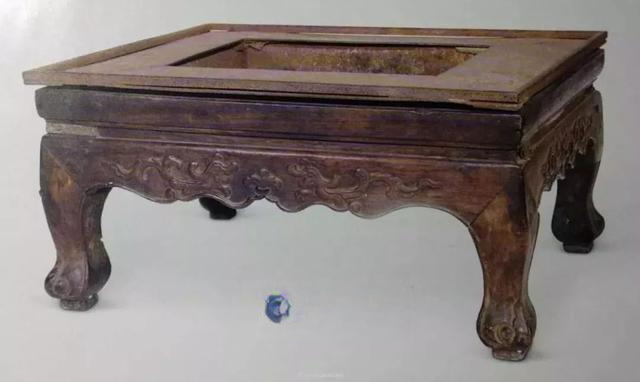
Huanghuali brazier stand
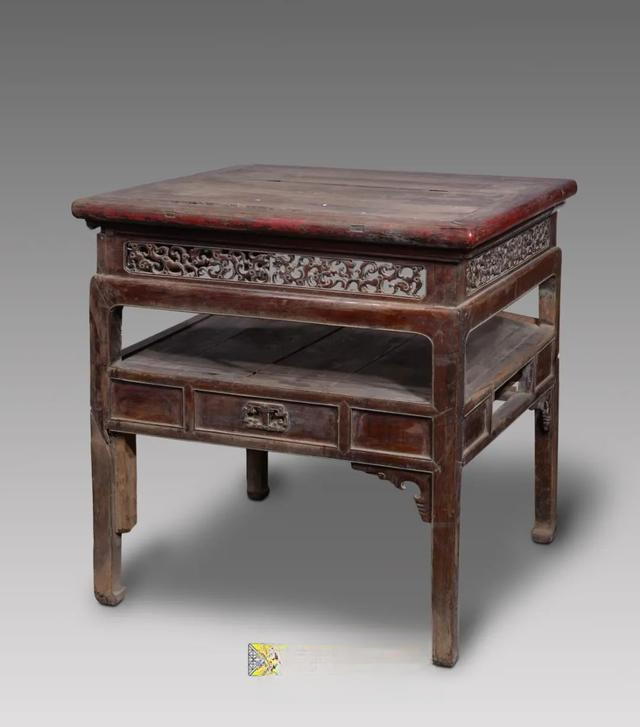
Huanghuali Dragon Pattern Dual-purpose Brazier Stand with Panel
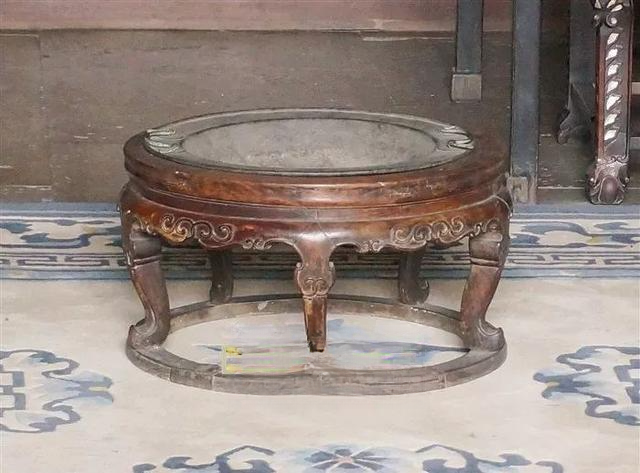
The charcoal brazier and brazier stand currently preserved in Prince Gong’s Mansion in Beijing
refrigerator
We now call refrigerators home appliances, but in the past, they were typical pieces of furniture and a special case among classical furniture.
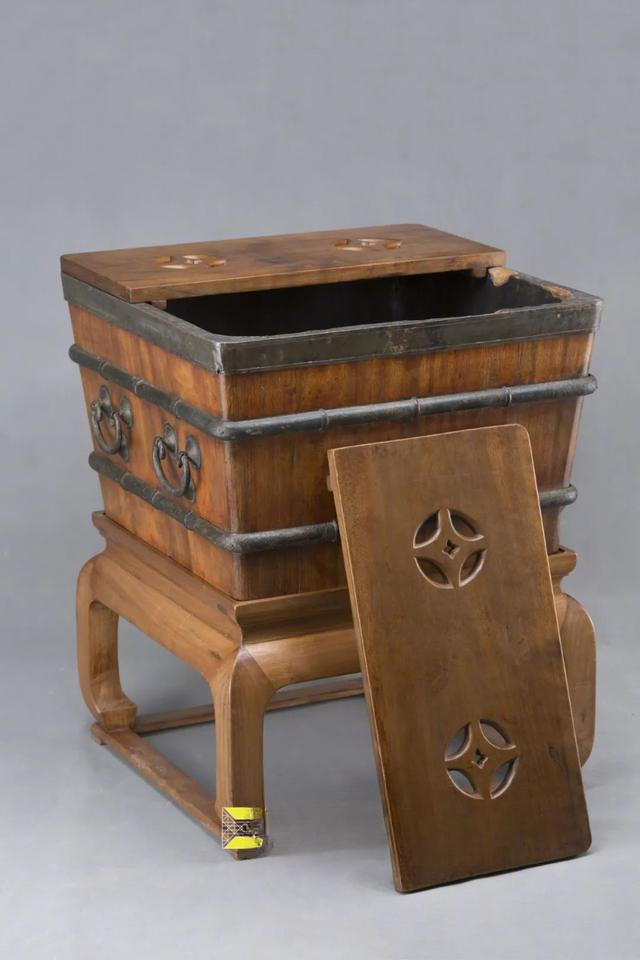
Qing cypress refrigerator
The general structure of a refrigerator in the past was a pair of movable lids on the box. The lids had two or four coin-shaped or other decorative air holes, which were used to lift the lids and also served as channels for the cold air stored in the refrigerator to dissipate.
There is a small hole in the corner of the lower part of the box to drain the water after the ice melts.
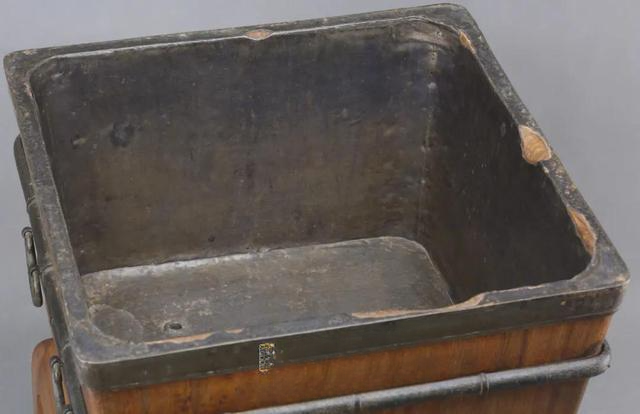
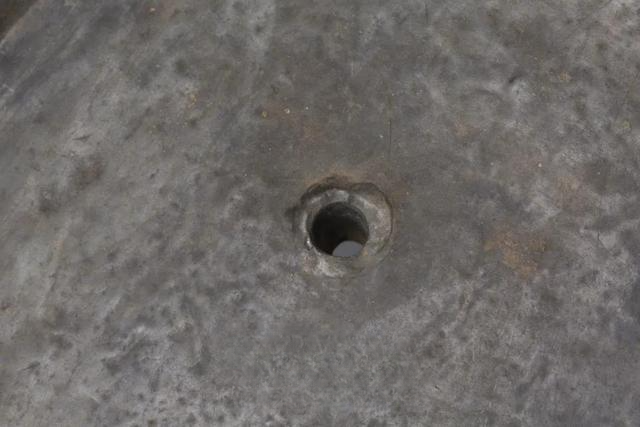
Copper handles are installed on the two sides of the refrigerator for lifting. The refrigerator is supported by a wooden base, which is usually waisted, connected to drum legs and with a base.
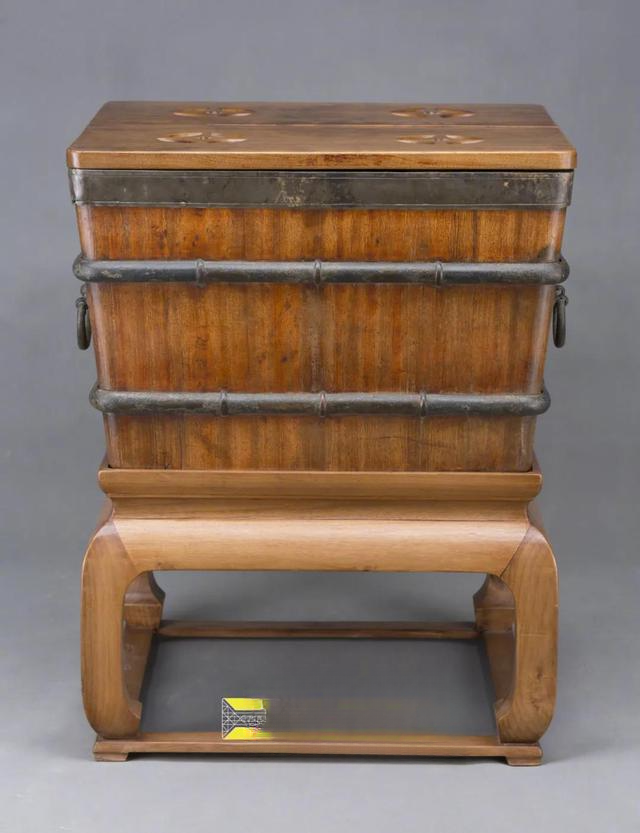
In the unbearably hot summer, this type of refrigerator can be used to chill fruits and drinks after putting ice cubes in it, and it can also emit cold air from the vents to lower the indoor temperature. It can be said to be a two-in-one refrigerator and is very popular.
Travel stationery box
Folding furniture is common, mostly cross-folding, such as cross stools and cross-legged chairs, but it is relatively rare and novel to fold all the way around, such as the special Qing Dynasty Qianlong travel stationery box below.
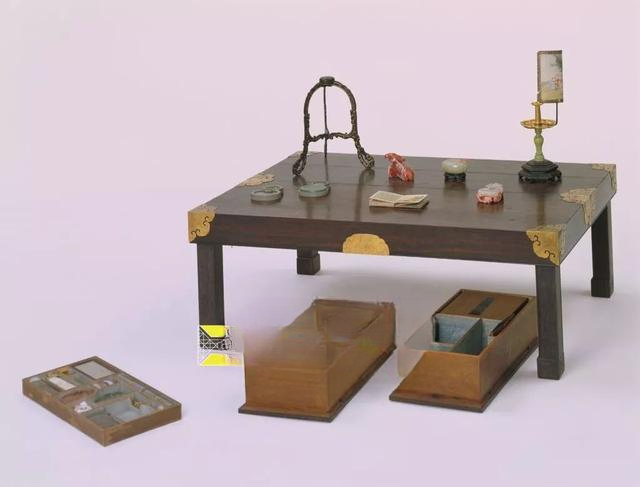

Qing Dynasty Qianlong Travel Stationery Box
The lid of the box is equipped with a gilded hidden lock, and the keyhole is set at the bottom of the box. The box is opened to form a small rectangular table, and the lid and bottom of the box are closed to form a tabletop. The table legs are designed in the box slot, supported by a movable thin plate, and then fixed with copper gilded hidden buckles. It can be folded and unfolded to form a table, and closed to form a box. The design is ingenious.
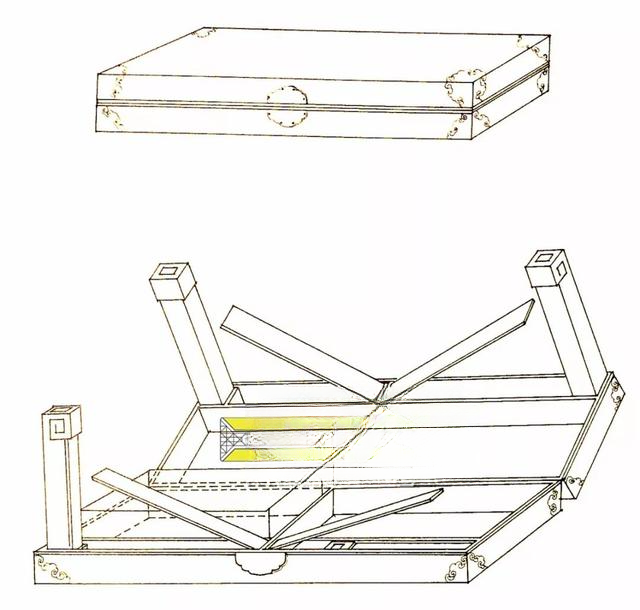
Line drawing of a travel stationery box from the reign of Emperor Qianlong of the Qing Dynasty
This stationery box contains a variety of stationery items in one box. It can be opened anytime and anywhere as a table for writing poems, handling government affairs, playing chess, and appreciating calligraphy and painting. According to the archives of the Imperial Household Department, this stationery table box was made in the 22nd year of the Qianlong reign (1757). This box is exquisitely designed and is most suitable for travel. It is a masterpiece of stationery items during the Qianlong period of the Qing Dynasty.
Chess Table
A chess table is a table used for playing cards or chess. It was quite popular in the Ming Dynasty. It is also rare among the surviving Ming and Qing furniture, and the actual objects are also very exquisite.
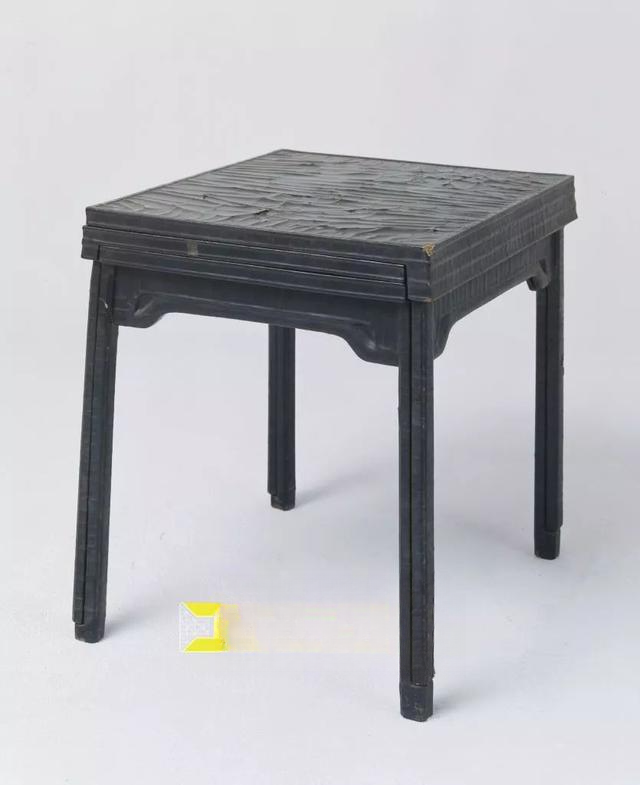
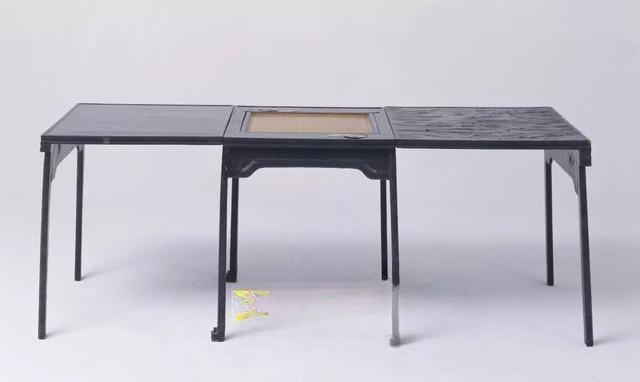
Ming Wanli black lacquer chess table, collection of the Palace Museum
This black lacquer chess table from the Wanli period of the Ming Dynasty in the Palace Museum has movable joints on the tabletop. When closed, it is a four-legged wooden table, and when opened, it is an eight-legged chess table. The table has protruding curved legs.
Its structure is to add two layers of tabletops on a four-legged square table, and each layer of tabletop has two flat square legs. When stacked, the flat square legs on the tabletop just fit together with the legs of the square table to form four square legs, and when unfolded, the eight legs each touch the ground.
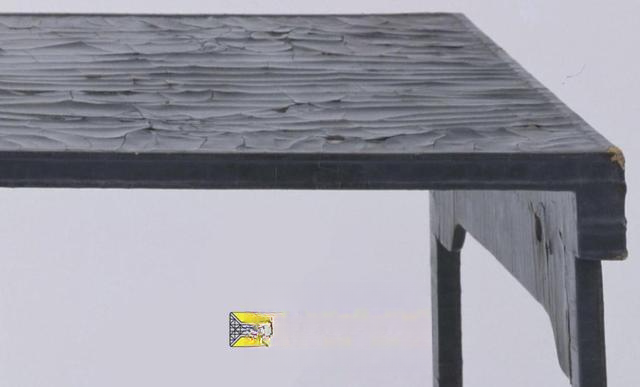
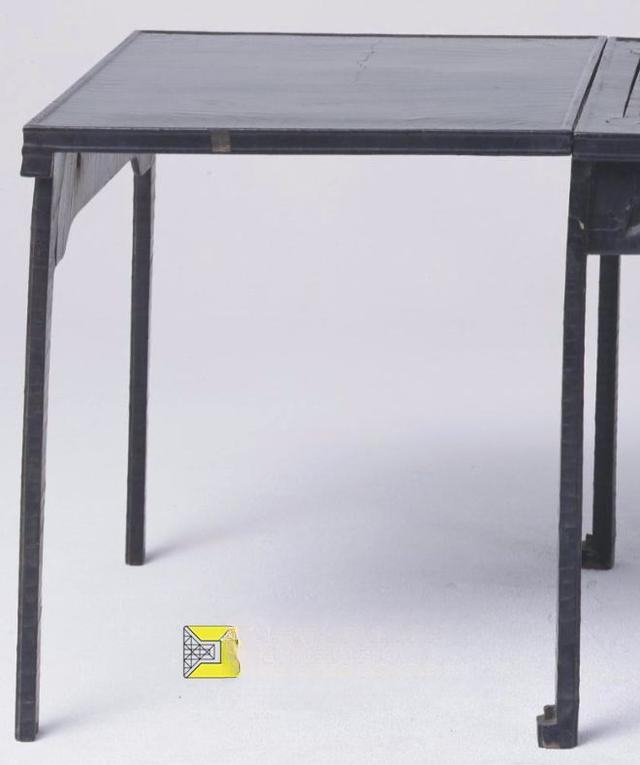
The legless side of the table is placed on the hooks on the edge of the square table, making it a rectangular table with eight legs. The chessboard, chess box and movable chess table are also placed in the mezzanine of the table.
The edge of the tabletop has a water barrier, and in the middle is a movable board with a yellow-ground red-grid go board painted on it, and a yellow lacquer ground on the back. There are two round-mouthed chess boxes on the side of the chessboard, both with lids, containing one black and one white chess piece.
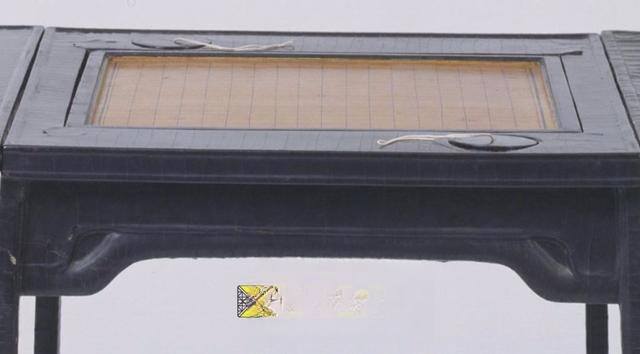

There is a square groove under the chessboard, with a drawer on each side of the groove, containing 24 carved jade bull cards, 32 carved bone cards, 2 bone bull cards, 2 paper chips, 1 chip chip, and 1 desk tool, all with wooden boxes. There are also 2 strings of tin coins.
This is a unique example, and it is quite wonderful.
Of course, the chess table that impressed us the most is the one below, which is also extremely rare.
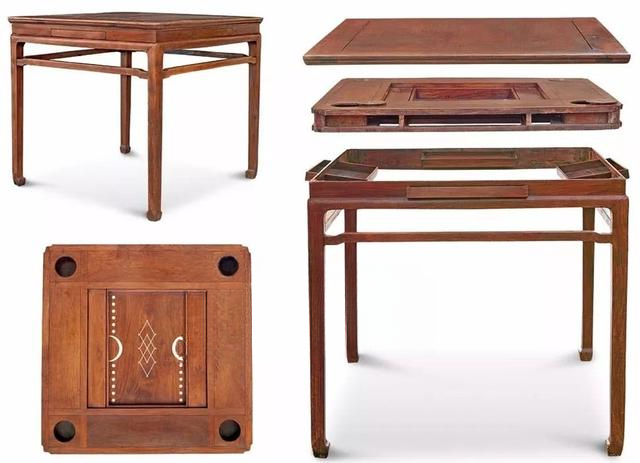
Early Qing Dynasty Huanghuali high waisted detachable chess table
This chess table has multiple functions in one. There is a chessboard in the middle, one side is for Go, the other side is for chess, and when it is opened, there is also a backgammon board underneath.

This kind of table gives you great flexibility when playing chess, you can use whichever chessboard you like.
Bottom-mounted bright cabinet
Among Ming-style furniture, there is a type that combines a shelf and a cabinet. It is a piece of furniture that combines the three forms of cabinet, cupboard and shelf in one. The most common form is that the shelf is on the top and the cabinet is on the bottom. Beijing craftsmen call the upper open part without doors "bright shelf" and the lower part with doors "cabinet". Together they are called "bright shelf cabinet".

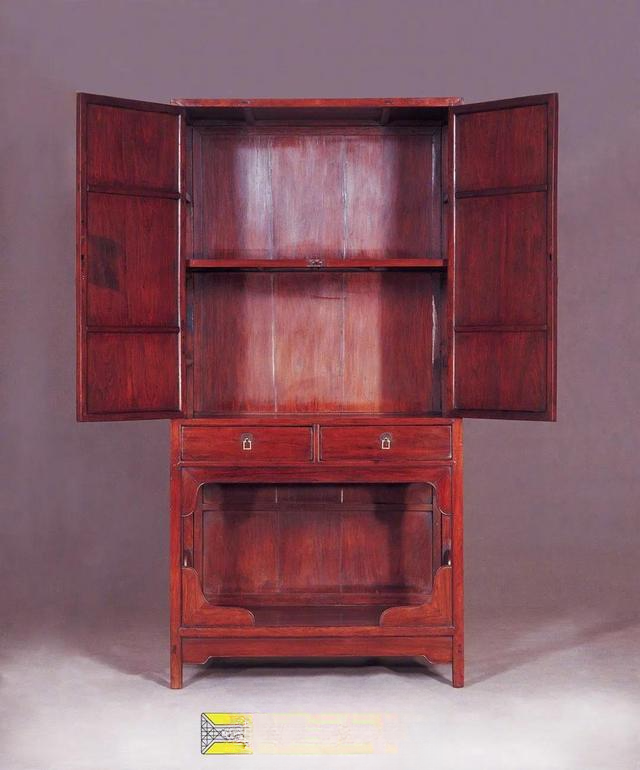

This bright-grid cabinet is unusual in that the bright grids are placed downwards, which is very interesting, grand and solid, and has a hint of the flavor of a Western closet.
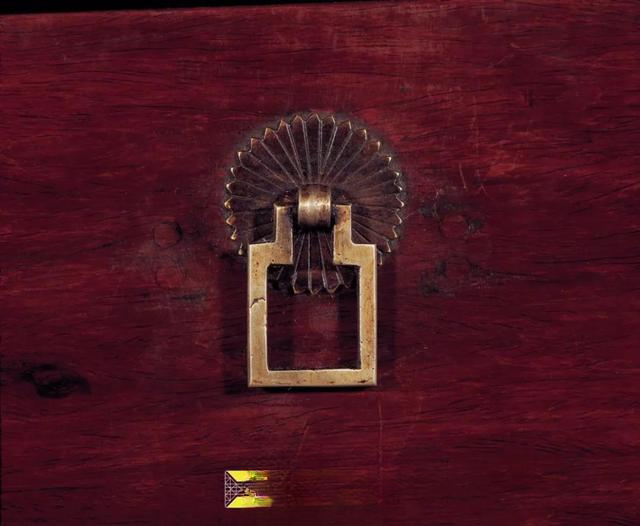
Having seen this, you must not have seen enough!
There are many interesting and fun furniture. Many readers have sent me furniture pictures, which I have never seen or recognized. In the future, you can send more pictures and we can study and discuss them together. If you like this article, please leave a message and I will continue to share with you~